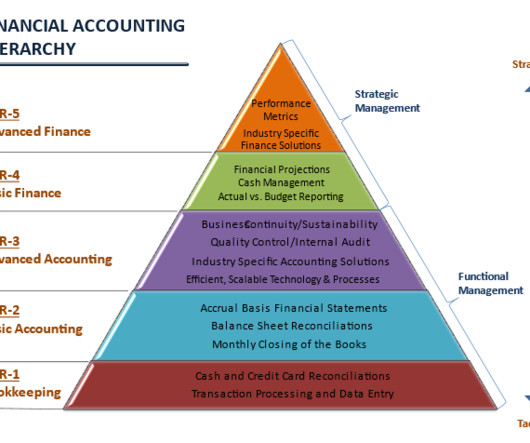Financial Accounting Hierarchy - By JP Puchulu
Boston Startup CFO
APRIL 3, 2023
In this tier, a double-entry accounting system is employed to ensure the accurate recording of all transactions. Additionally, it is necessary to maintain accounts payable and accounts receivable, guaranteeing that all transactions are precise and current.













Let's personalize your content